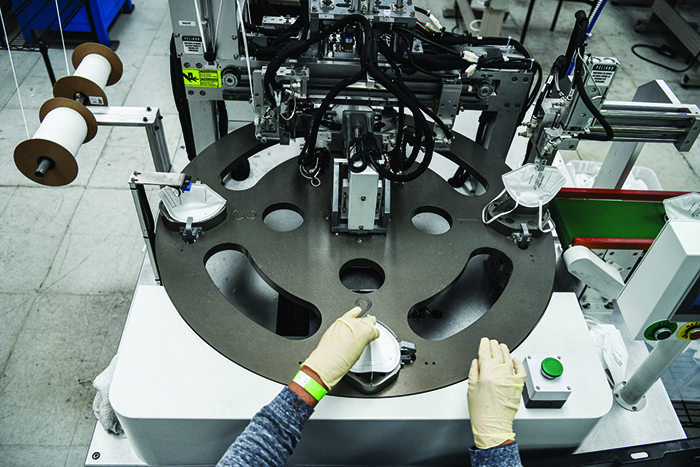 MIAMI: In this file photo, employees work as they make respiratory masks in a family-owned medical equipment factory in north Miami, Florida. —AFP
MIAMI: In this file photo, employees work as they make respiratory masks in a family-owned medical equipment factory in north Miami, Florida. —AFP
WASHINGTON: US factory activity continued to expand in August but manufacturers struggled with ongoing supply chain snarls while employment contracted again, according to an industry survey released Wednesday. Defying expectations for a modest decline, the Institute for Supply Management (ISM) reported its manufacturing index rose slightly from July to 59.9 percent last month, extending the sector’s recovery from last year’s downturn caused by the pandemic.
However, “companies and suppliers continue to struggle at unprecedented levels to meet increasing demand,” ISM manufacturing survey chair Timothy Fiore said. “All segments of the manufacturing economy are impacted by record-long raw-materials lead times, continued shortages of critical basic materials, rising commodities prices and difficulties in transporting products,” he said in a statement.
The impact of the supply chain snarls was seen in the data, with the order backlog index rising about three percentage points to 68.2 percent. Otherwise the report was generally positive, with new orders climbing about two points to 66.7 percent, production gaining a similar amount to 60 percent and inventories crossing the 50-percent threshold indicating expansion with a 54.2 percent reading in August.
The data also showed supplier deliveries were speeding up, an indication that an end to the backlogs and delays may be coming. “Business is strong. Part shortages are our largest business constraint. We cannot fulfill orders to customers in reasonable lead times,” an electrical equipment, appliances and components firm told the survey.
However, employment declined nearly four points to 49 percent, returning to contractionary territory after a single month of expansion. Fiore said “companies are still struggling to meet labor-management plans” but said there were signs the situation will again improve, as a large majority of companies say they are recruiting, and fewer are expressing issues filling open positions.
Ian Shepherdson of Pantheon Macroeconomics said although supply chain problems are not likely to worsen further, he believed manufacturing was primed for a pullback, pointing to surveys from China which tend to predict the path of US industry and show the sector contracting.
“Stepping back from the COVID noise, the underlying rate of growth of manufacturing output probably is slowing, both in the Unites States and elsewhere, but this was inevitable, given the unsustainable strength of the initial rebound,” Shepherdson wrote in an analysis.—AFP
.jpg)
